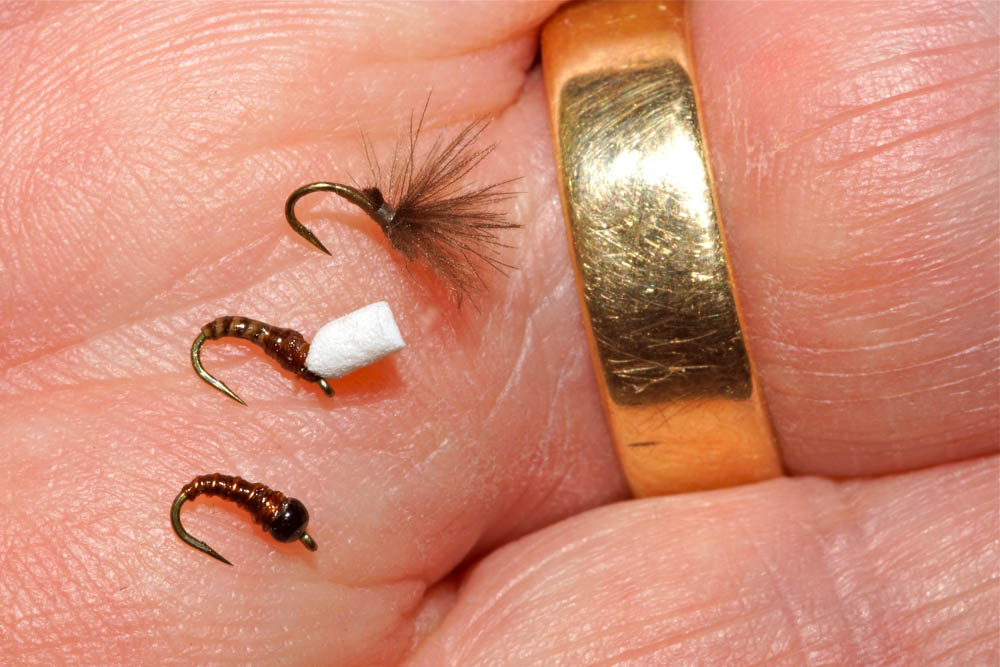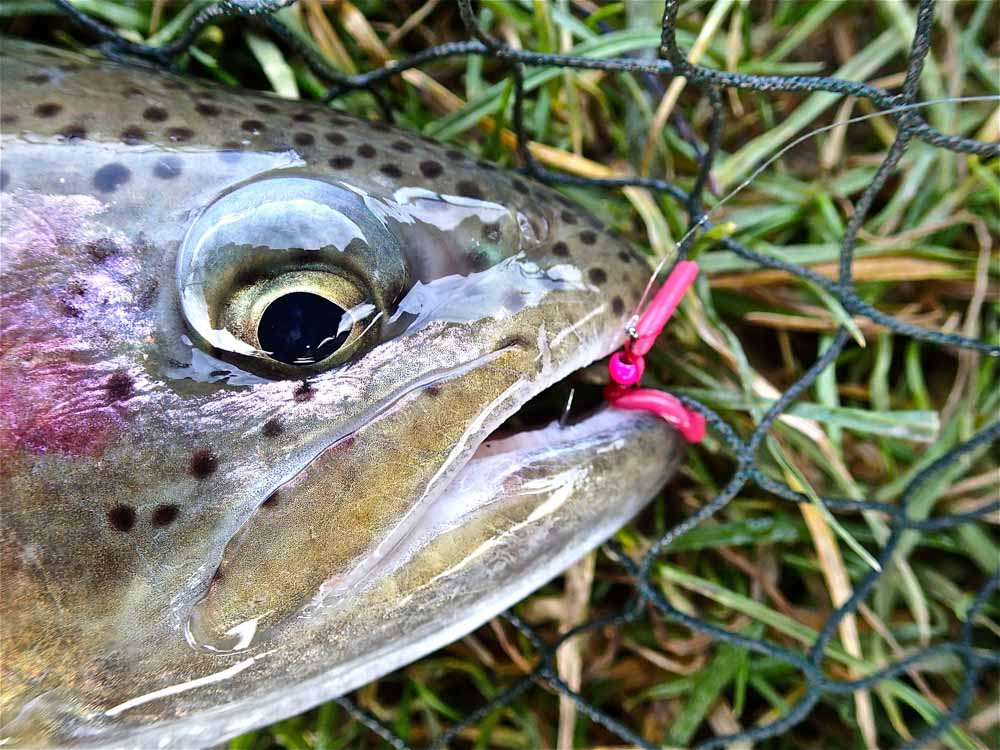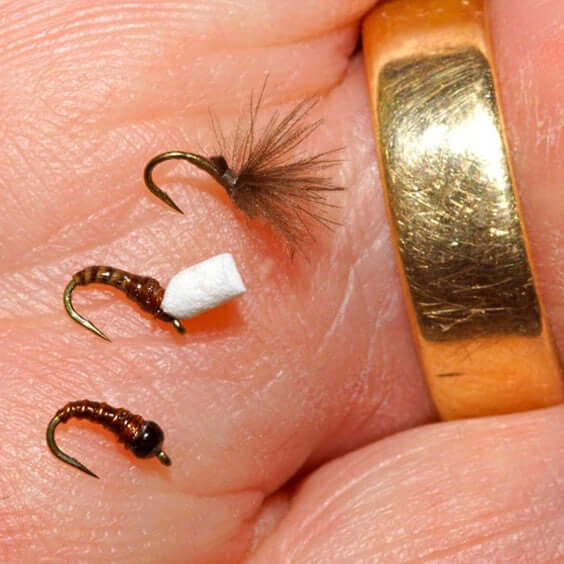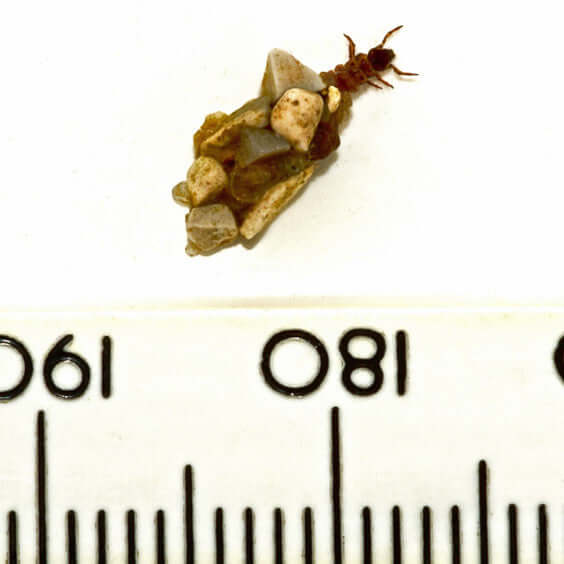What a start to 2016, rain, rain & more rain. My only fishing option has been my local small still water. Tiny Chironomids are the mainstay food for the resident rainbows throughout the year.

Micro-Suspender Buzzer
Some days the fish focus on the adults, particularly if it is cold which delays their lift-off from the surface. Some of my best dry fly action has been when the temperature has been around freezing, particularly at dusk. At such times a size 24 (or smaller) CdC Minimalistic Micro-Midge or IOBO Humpy is my choice of fly.
If the fish are concentrating on the pupae at the point of emergence in the surface film I’ll opt for a size 24 or 26 Micro-Suspender Buzzer or similar sized Shuttlecock. At other times, when buzzers are hatching, the subsurface pupae are on the menu & a tiny Bead-head Buzzer Pupa is required. Finally there are times, particularly in windy conditions & early in the morning when there is no hatch: then the fish may well be feeding on red bloodworms & other coloured Chironomid larvae (yellow, olive & orange) from the lake bed in silted areas.
I find bloodworm feeders to be less fussy about fly size & I usually opt for a size 16 Squirmy worm in red (alternatively pink, orange or green if the fish have seen a lot of anglers’ red bloodworms. On heavily fished ‘catch & release waters fish can soon wise-up to popular fly patterns or colours). Just occasionally I find I need to use a more realistic size 20 Bloodworm tied with red flexifloss. The great thing about Squirmy Worm material is that it is very soft, flexible & translucent.

CdC adult imitations
Good presentation is vital, particularly with tiny flies. Chironomid larvae & pupae have brief spells of rapid gyration interspersed with periods of immobility, however they make very slow progress through the water. Much of the time they drift at the whim of subsurface & surface currents. Even the slowest figure of eight retrieve is totally unrealistic.
I fish CdC adult imitations dead-drift, avoiding any drag from surface currents & the wind. Buzzer pupae I suspended under a small dry fly, from a greased leader or tiny indicator, alternatively I fish them ‘on the drop’ using a greased leader, watching for any change in the rate that the leader draws down into the water. If fishing ‘on the drop’ Dump/Pile Casts, heaped the leader on top of the fly ensure that the fly sinks vertically rather than unnaturally in an arc as would happen with the leader landing in a straight line. Bloodworms I generally fish very slowly suspended just above the lakebed.
To facilitate good presentation I like a long light rod (10’ to 12’, 2 or 3 weight), Jeremy Lucas Dry Fly line & light tippet (5, 6 or 7x depending on fish size & hook size). I often tie my flies into a loop knot / Rapala knot to facilitate free movement.
































